It would be fair to say that there is no food I have loved more in the world than honey, and none that I associate more closely with Coorg. So please bear with me through this next series of posts, while I share the love 😉
At a Coorg child’s naming ceremony, a gold coin is dipped in honey, and touched to the infant’s lips, a symbolic wish and blessing for the child to live a life of sweetness and prosperity – a life of gold and honey.
I’ve always suspected that in my case, rather than its being a symbolic gesture, I actually got a proper taste of that little drop, before it could be discreetly dabbed away. And there began my lifelong passion for the stuff. You can keep the gold. Just leave me the honey!
As children, returning to Coorg for our annual visits, we most often travelled from the heat, and yes, dust, of parts of India where temperatures that soared above 40 °C were nothing to get excited about. You just doused the grass blinds on the windows and verandahs with extra water, drank lots of rooh-afza and lime juice, and got sunstroke from going out in the noonday sun. All the more reason then, to truly appreciate the return to the cool climes of Coorg.
The journeys getting there were long, and slow, with several stops to allow the car’s engine to cool down, top up the radiator with water, and picnic under a tree. When the climb into the winding ghat section finally began, there was the problem of several children with varying degrees of “car-sickness” to address. So, there’d be a few more stops by the side of the road, where some battled their rebelling breakfasts, while others stood breathing in the cool, flower scented air. Sometimes you could do both.
Quite often, it was at times like this , staring into the shaded depths of the coffee estates that flanked the road, soaking in the sounds of the countryside, that you would become aware of a gentle humming, somewhere amidst that dappled mass of coffee bushes and trees.The soft sound of bees at work.
In Coorg, it seemed honey was everywhere. From giant hives hanging off tall shade trees on the estate, to bee boxes in the flower filled gardens, and always, a large bottle at the breakfast table, to eat with bread, puttus, dosas, idlis, and most of all, avocados. You ate it with just about anything you fancied. And I fancied honey with just about anything, and in one memorable phase, began adding it to mutton curry, to great effect, I thought. The adults weren’t amused, and that practice came to an abrupt end. I wasn’t prepared back then to substantiate my claims to culinary exploration by quoting ancient Roman recipes with just such combinations of spices, meat and honey, which have been recorded for posterity!
I loved getting a sore throat, so that I could claim my medicinal spoonful of honey mixed with finely ground pepper or ginger. A burn in the kitchen, and my grandmother would send me off to slather some honey on the wound.That was a dressing that got replaced rather frequently!
Travelling back from Coorg, my parents carried jerry cans of honey, 20 or more litres at a time, to cater to our family’s needs. This quantity caused some consternation amongst my classmates in Northern India, (more specifically in Delhi and Punjab), most of whom were accustomed to eating honey strictly in a medicinal capacity. In turn I was equally gobsmacked by the tiny bottles of 50ml or less that passed for a supply of honey in many homes I visited!
My father was posted in Punjab rather frequently, and the state is a large producer of honey. So, why carry honey all the way from Coorg, you ask? Okay, I’ll admit to being a bit of a honey snob at the time. The local honey didn’t “taste right”! Not for me, those strongly flavoured mustard flower, or eucalyptus honeys, though the curious flavour of neem blossom honey had a definite appeal. But none of those came close to the Coorg honey I craved, with the essence of wildflowers, orange and coffee blossoms.
With that background, you can imagine my chagrin when I recently read that over 50 percent of honey sold in Coorg today, is actually honey from Punjab that is blended with other honeys and sold under the blanket label of “Coorg” honey!
Even worse, there is much adulterated stuff in the market, with sugar and jaggery syrup making up the bulk of some “honey”.
Coorg was the largest producer of honey in India until 1994, but honey production took a big hit when imported bees carried “Thai sac brood disease” into the country, infecting local bees and effectively wiping out the honey industry in Coorg.
Suresh Chengappa, the owner of the delightfully named “Honey Valley Estate” in Kakkabe, Coorg, was a pioneer in the commercial beekeeping business. According to his website, he was then the largest individual producer of honey in India, with a peak production of 6.5 tonnes a year.
I contacted Mr Chengappa to shed some light on the situation.
Here are a few excerpts from the interview.
On how he came to be involved in beekeeping on a large scale:
“I had to earn money to make both ends meet. Any other activity would have required substantial capital. I thought that if it is beekeeping, with physical effort one can start earning something. I never wanted to go on the beaten track. In addition,a few bee hives that my father had were producing good quantity and quality honey. Hence I dreamed of a commercial apiary. Soon hurdles cropped up. After extensive travelling, research and experiments, I , along with Danish beekeeper Jan Olsson evolved a management method that changed the course of beekeeping.“
Mr. Chengappa used wild bees in his apiaries, employed 12 people to help, and marketed most of the honey himself.
In answer to the question of why the area around Bhagamandala seems to be particularly well suited for honey production:
“Bhagamandala area is surrounded by evergreen forest. There are flowering herbs, shrubs and trees which provide nectar throughout the year. In addition it was a predominantly cardamom growing area .Cardamom is a shade loving plant, hence the trees were not cut. Hence the areas around Bhagamandala were honey producing areas.“
Sharing some thoughts on the effects of Thai sac brood disease on domestic honey production:
“Some of the scientists who wanted to improve their Asian stock of bees brought some Mellifera bees ( European stock ) from China into Thailand. They did not know that mellifera bees are carriers of a disease called sac brood,even though they do not get affected. Disease struck the brood ( larva)of Asian bees and started spreading. It entered North India somehow.
Then a scientist in Kerala brought mellifera bees from Punjab to improve beekeeping in Kerala. That is how the disease landed in Kerala and spread all over South India like wild fire. It entered Coorg in 1994.
It kills the larva and not the adult bees. Colony strength gets depleted. As the old bees die, the colony becomes too small and often perishes. But since the bees in India are more or less wild they have the strength to rejuvenate. Hence bees are strongly coming back now. But the virus cannot be wiped off. Because the devastastion of habitat overall production is drastically reduced. Commercial beekeeping will never be possible using local bees.”
What are some of the other factors (natural or man made) that have impacted honey production and quality?
“When TSB struck, coffee prices started shooting up and cardamom went down. Beekeeping was done in evergreen forest belt which has herbs, shrubs and trees yielding nectar throughout the year. Cardamom being a shade loving plant, suited beekeeping . People lost interest in cardamom because of low prices and a virus disease called “Katté”. They also lost interest in beekeeping because of TSB and both declined drastically.“
Today, Mr Chengappa no longer keeps bees, and runs Honey Valley as a coffee estate and resort.
On making this decision, he says:
“Foreigners were coming here for walking on the hills. This is a beautiful and perfect place for walking enthusiasts. These hills are gentle, cool, and have open grass covered peaks and different kinds of wooded forest. That made Honey Valley famous. Hence we opened a guest house as the enthusiasts who came from different parts of the world increased. Now hospitality has become our main activity in addition to coffee farming.”



Pictures courtesy Honey Valley
Well, going by the glowing reviews that Honey Valley regularly garners, it would seem that Suresh Chengappa has found another calling at which to excel. Seasoned travel writer and photographer, Sankara Subramanian* figures the Chengappa family is doing a great job, and counts Honey Valley as “maybe my best home stay in India”.
Sweet times again for Honey Valley 🙂
*The blogger behind “Be on the road with Sankara“.
Despite the seemingly sorry overall state of commercial beekeeping in Coorg today, there are some entrepreneurs, who keep the dream alive, working on a small scale, and marketing their produce themselves. Cousins, B. S. Prashanth, and B. S. Kishore Kumar are an example. Both men have kept bees for the last 22 years and became partners in the business about 4 years ago.
With no formal training, both learned the ropes by observing their fathers, who were also self taught beekeepers, at work. Despite having nearly 500 boxes placed around various properties, it’s still tough going today, with yields not being as high as they once were. Prashanth echoes what Suresh Chengappa said about the effects of TSB, and speaks nostalgically of the time when his father could easily collect 25kg of honey per hive in a year. It’s now closer to 3 – 4kg on average, he says, and 7kg would be exceptional.
They describe the practice of beekeeping with great enthusiasm, recounting how they deal with various pests without the use of chemicals, and predators like the “Bheemaraja” (racket-tailed Drongo) that swoops down on the slow moving queen,when she flies high into the trees to mate. Pointing to what look like tiny flies hovering around a hole in a mud embankment, they inform me that those are actually wild bees, and that the honey from such a hive is considered to be of high medicinal value.
Both men know the local flora well, and they name a range of wild trees and shrubs that the bees produce the best honey from. At the time I spoke with them, they had some beautiful honey from the wild Calliandra blossom . The honey was an extraordinary shade of opaque yellow, almost like ghee made from cows milk. They also had another dark amber honey from a forest tree that flowers once in 3 years. Both were amazingly good!
Prashanth and Kishore Kumar would like to eventually have their business certified organic. Here’s wishing them good luck in their venture!
With thanks to Suresh Chengappa, B. S. Prashanth, and B. S. Kishore Kumar for their input.

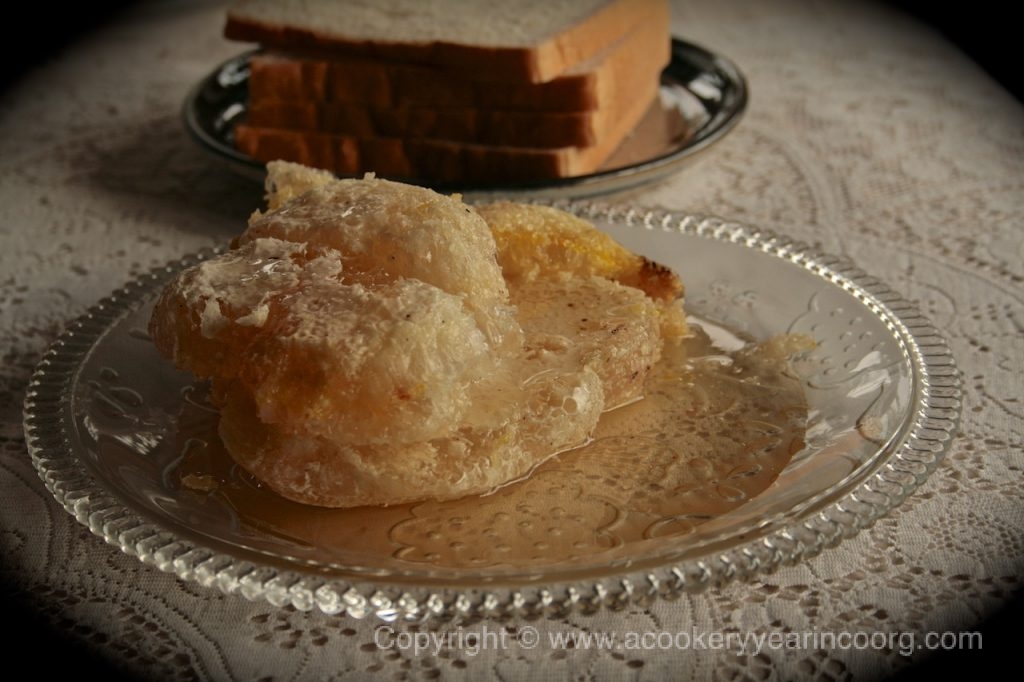
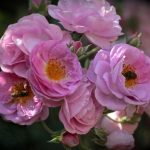
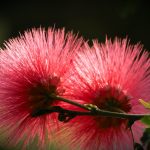

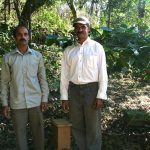
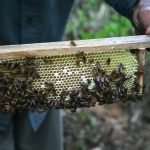
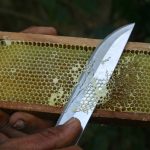
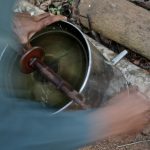
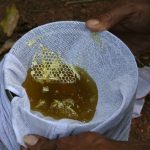
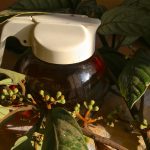
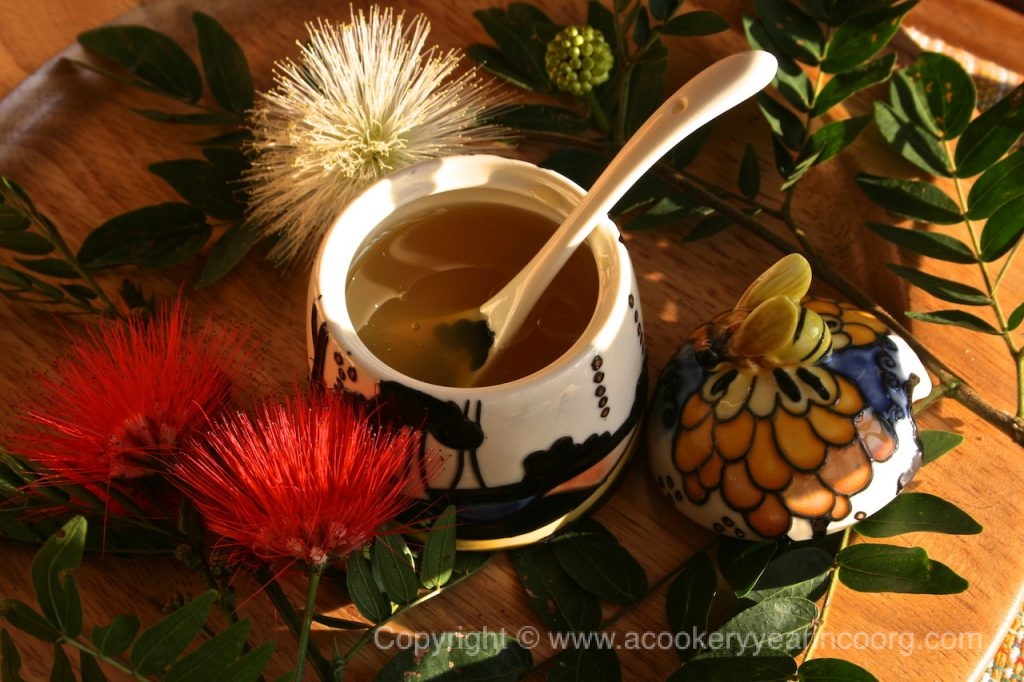
And you have been busy as a bee Shalini , interviewing , photographing and filling in so much information to give us yet another wonderful post. Thank you for the interview with Suresh Chengappa, B. S. Prashanth, and B. S. Kishore Kumar , we know now where to tap the real Mc Coy Your descriptions are as ever so vivid and life like that I was at once transported to the forests of Coorg and next minute I was thinking of another beautiful albeit part fictional jungle and before my eyes was Baloo the bear dancing to Bare Necessities . Yes Winnie the pooh comes next and I can picture a darling child with a honey jar stuck to her nose at her Grandmother’s table in Coorg . Though it is strictly forbidden to bottle Coorg Honey in anything else except Whiskey bottles ( KAchampulli too ) the pioneer recyclers The recollections of childhood days are just as delightful to read . So do you still like to eat Mutton with honey ? I often read about honey glazed ham and pork and then remember Pandi Curry and say why mess with perfection. I know I am straying far away from the topic . One more thing that your posts always bring home to me is how difficult it is to work the land ( anywhere in the world ) and I have increased respect for the people who have done so for centuries . They are so many unknown variables and perils . The Honey and Bee keeping Cottage Industry is a perfect example . Your lovely writing with so much information also made me understand why Coorg honey has been so valued and appreciated. This is a perfect post in every aspect, the writing, the brilliant photography ( I gather it must be a passion ) and the hard work of compiling useful and interesting facts, meeting people faithfully recording information . Kudos to these fine gentleman and I do hope they get their Organic Certification . I really believe then we should be ready to pay a higher price for this bullion , organic produce is generally more cost intensive with lower outputs , I wonder if this would hold true for honey . Shalini honey 🙂 looking forward to more . We shall mead on ;-/ The Honey Pot that bee just wonderful . The details in every post…. just genius .
Jyoti, that honey obsessed child bore more than a passing resemblance to certain fictional bears, especially the one of ahem…little brain and a somewhat tubby midriff! 😉 I think now that the clampdown on honey with curry was probably more from a sense of separating me from the honey bottle for at least one meal.I made it through to tea time, so that’s okay! I haven’t tried it again in years, but some things are probably best remembered. And then again, some things are better revisited. I now have a better appreciation for strongly flavoured mustard honey, though it will still never replace anything from Coorg. Those bees really know how to distill the essence of the land. I recently found some superb wild neem honey from India in a local store and of course I bought some. Every spoonful transports me back to cantonments with avenues of neem trees, shedding feathery leaves and squishy, garlicky scented berries onto the hot tarmac. I guess you had to be there…
Hearing about what really goes into the production of the honey we take so much for granted makes you appreciate every spoonful that little bit more. The two cousins I spoke to spend so much time walking, or if they’re lucky, hitching a ride with passing friends and acquaintances, to check on their bee boxes that are placed in scattered locations. They probably travel even further than the bees do, in making the honey. Even if the costs are low, it is a lot of work.
Thanks as always for being such an engaged and appreciative reader! Stick around, there’s more good stuff coming. 🙂
Btw, did you ever wonder how they managed to wrap those (mostly whisky, sometimes rum) bottles of honey or kachampuli or squashes so ((tightly)) in newspaper? That packing wouldn’t budge one mm until you were ready to unwrap it!
Oh yes Honey with mustard a dash of pepper ans maybe even some paprika makes for a jolly fine dip . Oh Good heavens no , I said a delightful little child not a bear cub child hoping to conjure up a picture of a little angel with big dancing eyes all agog at the prospect some more honey :-). Memories are just that like the neem flowers , seeds . I have the most wretched memories of anything to do with neem , a most vile paste of neem leaves was made and forced down my throat every day two times a day every time I went to spend a few weeks in the midst of summer , hot and very humid at a Bengali friend’s place in a small Mohfussil town in what is now Jharkhand . Those summers were in the mid forties Celsius and muggy and humid the air so thick you needed a hacksaw to cut through it , no power for long stretches of the day . Yet I would spend a week at her place every summer . The love and warmth of her family , aunty’s awesome Bengali Ranna ( cooking ) . Dinners were alfresco- ish in a lattice enclosed verandah , right outside the kitchen , a doting aunt would stand between us fanning us with a hand held cane fan , If I protested she would say hush , a meal must be eaten in comfort , enjoyed with love and friendly banter only then it was worth eating and would it be properly nourishing and well digested ! A s you said you have has to be there . This post was at once about childhood and the wonderful adults who made it so beautiful for us .. and the realities of working the land a very different adult world full of responsibilities being busy as the bees at work .
What a great post! You certainly have a way with words. Your writing is so evocative!
Where can find Coorg Honey in the US?
Thank you, Ammini 🙂 I don’t think real Coorg honey is currently available in the US- it’s hard enough to get in Coorg! But watch this space for some exciting news coming from the Coorg honey front. The next time you’re in India, let me know, and I’ll try and get some to you. Meanwhile, do see if you can find a way to get hold of that neem honey from TJ’s I was talking about- it’s really good stuff.
Jyoti, despite the neem overdose, those are some lovely memories of time spent at your friend’s home! That kind of nurturing hospitality is something I can relate to completely.In my case, however,any unpleasant associations are usually due to my inclination to overindulge. Don’t make me show you pictures 😉
Beautiful site, Shalini! So tastefully done, just like I envisage its author to be!
Love the photographs, keep them coming.
The neem honey from TJ’s tasting so different from any honey I’ve had in the past – a bit strong and mediciney, I thought.
Trips! Welcome, and thank you kindly 🙂 That neem honey does have a very unique flavour. Funnily, it’s not one I personally associate with being medicinal at all, unlike that mustard, or eucalyptus honey I mentioned earlier. I wonder why that is.
Oh, and if you’re having trouble finishing it, I’ll be happy to help 🙂
Thanks for reading!